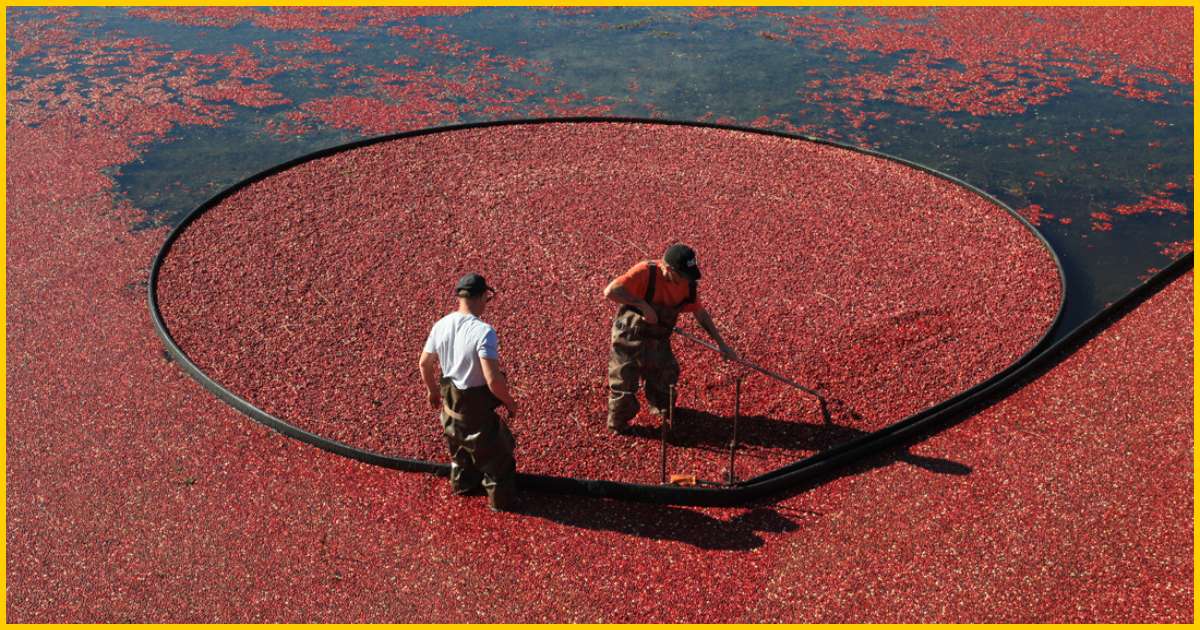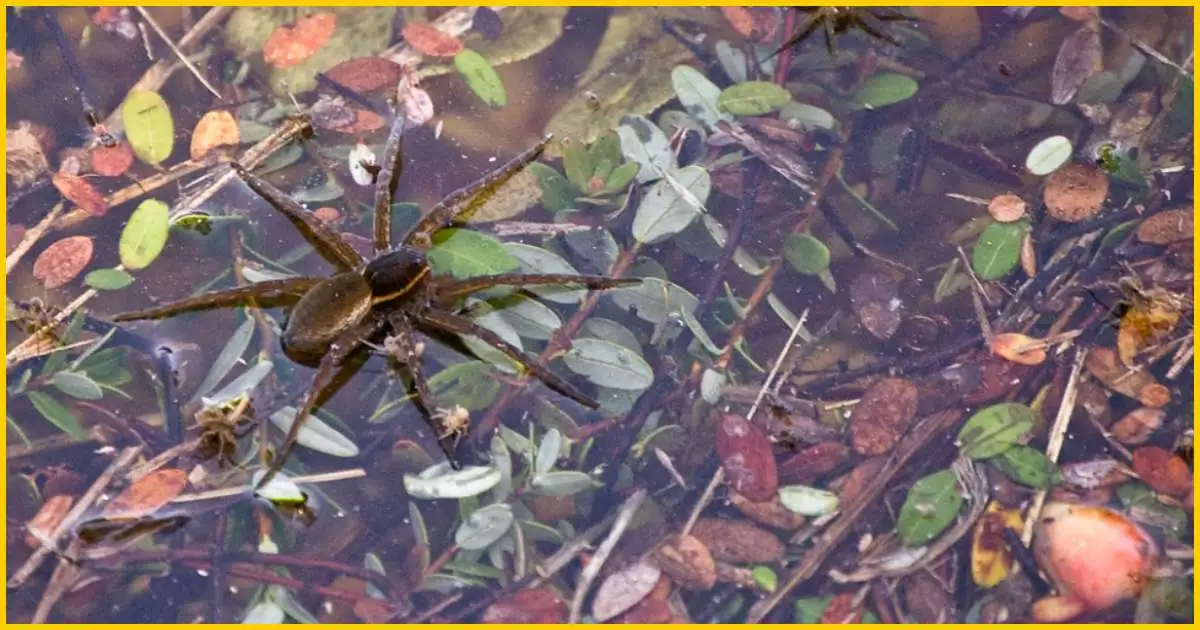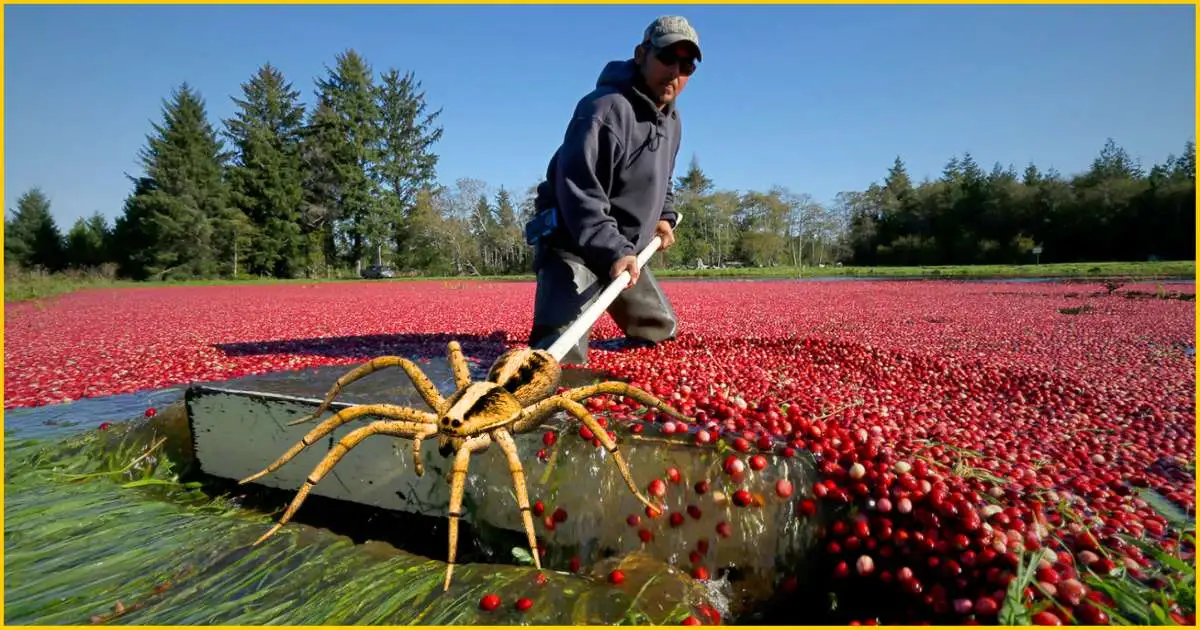Table of Contents
- Cranberry Bog Spider
- Mysterious Ambience of Cranberry Bog
- What are Cranberry Bog Spiders?
- Recent TikTok Trends and Wolf Spider
- Importance of Cranberry Bog Spiders
- Conclusion
Cranberry Bog Spider
Do you like cranberries? Of course, who doesn’t like that? We enjoy that tart cranberry sauce and also a fresh cranberry refreshing drink. Have you ever wondered about where it comes from? The answer is – Cranberry Bog. Moreover, this cranberry bog is home to cranberry bog spiders. In this article, we will explore the details of Cranberry Bog Spider: Everything you want to know about the species.
Let’s first understand the kind of habitat these spider species prefer to live in. Cranberry Bog is a wetland area, where cranberries are harvested. During the harvesting period, the cranberry bog looks like a beautiful bright red sea. Just imagine the picturesque beauty of this place!

Mysterious Ambience of Cranberry Bog
Most people believe that cranberries are harvested on dry land, with dense shrub-like vines. But in reality, this is America’s commercially grown native fruit, harvested in the wetland, Cranberry bog! To understand the mechanism of cranberry bog spiders, we first need to explore cranberry bogs and how it is harvested. Let’s get into the details of cranberry bogs briefly.
Cranberry bog is a low-lying field depression area, where water is flooded to grow the cranberries. This area is marshy and wet because cranberries require high moisture content for their growth. This low-lying vine of cranberries is layered with the help of sand, gravel, clay, and peats. The cold temperature and marshy place are the requirements for the growth of cranberries.
In the harvesting procedure of cranberries, starting from the growth of berries, budding, and flowering, a small sneaky creature co-exists with them. These small spider species are Cranberry spiders, which make their home in the vines and live in the Bog throughout the harvesting period.
The cranberries are mostly harvested using a three-wet hydrology method. The wet hydrology method starts with flooding the bog space. On the first day, the flooding water covers the tips of the vine. The next day, the water reels are driven onto the bog, to remove the cranberry fruit from the vines. On the last day, the fruits are corralled. The bogs are taken off using pumps and conveyors. Finally, the cranberries are transferred into waiting trucks.
What are Cranberry Bog Spiders?
Bog spiders is a general term used to describe various Spider species found in bogs and wetland habitats. That is to say, bog is not a specific taxonomic classification system for spiders. These spiders may come from a variety of genera and families. Their specific identification might differ depending on the region and type of wetland they inhabit. Wolf spiders, Orb-weaver spiders, and Nursery web spiders are examples of bog spiders.
Cranberry Bog Spiders prefer to live in a moist environment. They live in the Cranberry bogs, which is a – wetland area. Cranberry spiders are mostly found in North America. They prefer to thrive in acidic soils which are generally present in the northern United States and Canada.
Cranberry bogs provide an ideal environment for the growth of Cranberry Bog spiders. It is a spider’s paradise because of their rich vegetation, abundant water sources, and variety of prey. The complex web of vines and channels in the bog is well-managed by these spiders, who take advantage of it for hunting and hiding.

The cranberry bog spiders are dark-coloured arachnids that are adapted to inhabit the wet environment of cranberry marshland. They play the interesting role of pest control managers. That is to say, feed on insects such as flies, beetles, cranberry fruit worms, cutworms, and mosquitos that may potentially damage the cranberries. In short, they act as a shield of a cranberry bog, as sustainable pest control managers!
Due to their lightweight body, they easily tread across the water surface. The light body weight entails the utilization of the surface tension of water, smooth gliding, and hunting of their prey! Cranberry spiders also move quickly across the sandy soil of cranberry bog. This trait is a unique feature of cranberry spiders because other terrestrial predators cannot reach the critical food chain of Cranberry bog and maintain predator-prey interaction.
Now, let’s deep dive into various kinds of spider species found in cranberry bogs.

Mostly, Wolf spiders are found in the cranberry bog. Wolf spiders are also known as hunting spiders due to their ability to chase after their prey. Wolf spiders belong to the class Arachnida, order Araneae, family Lycodisae, phylum Arthropoda, subphylum Chelicerata, and kingdom Animalia.
Wolf spiders are found mostly in the inland regions. This species exhibits a wide range of habitats, meaning that they can be found both inland and coastal. Some of them prefer to stay in very specific micro environments such as the live-in streamside gravel beds or cranberry bogs. Although their hairy body scares people, they are not harmful to humans. They can also be found in homes, damp coastal forests, woodlands, and shrub lands.
The wolf spider uses moisture from the environment for its growth. Wetland areas like the cranberry bog are favorable for the growth of this species. In exchange, the wolf spider helps it eliminate the insects from the bogs. These insects harm the cranberries. Hence, it helps the cranberry bogs by eliminating and preventing the growth of insects. Therefore, there is a symbiotic relationship between the wolf spider species and the Cranberry bog.
Wolf spiders hunt other small spiders, small arthropods, ants, and earthworms. In the ecosystem of cranberry bogs, wolf spiders play a significant role in pest control. Because of their small and powerful legs, they run quickly and jump far distances!
Cranberry growth depends critically on this organic pest control. This natural pest control is an effective way to decrease the use of chemical pesticides and promote an eco-friendly approach to agriculture. Therefore, we can say the Wolf spider is the head of the pest control department in the cranberry bog’s environment!
Recent TikTok Trends and Wolf Spider
Surprisingly, thanks to TikTok users for capturing the videos of these Cranberry spiders in Cranberry Bog. These videos have ignited curiosity among people. Consequently, Cranberry Bog Spiders have gained popularity in recent years.
With popularity, some misconceptions as well as interesting facts about the Cranberry Spider have spread amongst the viewers. Thankfully, many viewers can get a glimpse of the fascinating behavior of the Cranberry Bog spider such as the Wolf Spider.
One of the influencers on the TikTok app showed how bog spiders would cover the workers’ eyebrows as they tried to harvest the cranberries. In another video, a former cranberry farmer claimed that these bog spiders are wolf spiders. These farmers treated them as co-workers because this spider species helps them by preventing unwanted damage to the cranberry production from the insects.
TikTok trends featuring Cranberry Bog Spiders brought audiences’ attention to the significance of protecting these arachnids and their wetland habitats. The awareness about saving these useful creatures is gradually spreading amongst the viewers.
Importance of Cranberry Bog Spiders
Cranberry bog spiders play multiple roles in the ecosystem. Their role extends beyond mere pest control and maintenance of the ecosystem. In addition to these roles, Cranberry bog spiders and arachnids are important indicators of environmental health. The presence or absence of a Cranberry bog spider can create water level changes and conditions in the cranberry bog habitat.
Cranberry Bog Spiders are very useful in protecting the environment because they are sensitive to changes in their surroundings. Because these animals are highly attuned to their environment, their distribution or population density changes can serve as early indicators of ecological imbalances. Thus, keeping an eye on their populations becomes essential to maintaining the delicate balance found in wetland ecosystems like cranberry bogs.
Additionally, studying Cranberry Bog Spiders highlights the general functioning of wetland ecosystems. These spiders, which are impacted by a variety of environmental factors, are essential parts of the complex life cycle found in cranberry bogs. Scientists gain a deeper understanding of wetland ecology by examining the habitat preferences, reproductive habits, and responses to environmental stressors of these organisms.
Furthermore, researching Cranberry Bog Spiders can shed light on more general ecological concepts like the dynamics of predator-prey relationships and the operation of wetland ecosystems.
In simple terms, understanding Cranberry Bog Spiders goes beyond simple entomology It provides a valuable understanding of more general ecological concepts such as symbiotic relationships, bioindicator, and prey-predator mechanisms. Therefore, Cranberry spiders provide important insights to understand the functioning of the wetland ecosystem.
Conclusion
To sum up, the Cranberry Bog Spider is an intriguing member of the distinct ecosystem that exists in cranberry bogs. The Cranberry bog is a wetland ecosystem that is susceptible to the growth of Cranberry bog spiders such as Wolf spiders, Orb-weaver spiders, and Nursery web spiders.
Cranberry spiders such as Wolf spiders are the species with small legs that help them to run fast and jump on the water’s surface. Also, their light body weight is a remarkable characteristic that helps them to glide smoothly on the water surface and hunt down their prey!
They play a commendable role in using their specialized hunting techniques to maintain environmental balance. We can guarantee the continued existence of Cranberry Bog Spiders and the numerous other species that inhabit these bogs by valuing and protecting their wetland habitats. So, next time you visit a cranberry bog, remember a hidden world present beneath the surface. This was all about the Cranberry Bog Spider: everything you wany to know, hence, please ask us any question in the comment section below.

Youre so cool! I dont suppose Ive learn something like this before. So nice to seek out any individual with some original ideas on this subject. realy thanks for beginning this up. this web site is one thing that is needed on the web, someone with a bit originality. useful job for bringing one thing new to the internet!
Thank you so much.